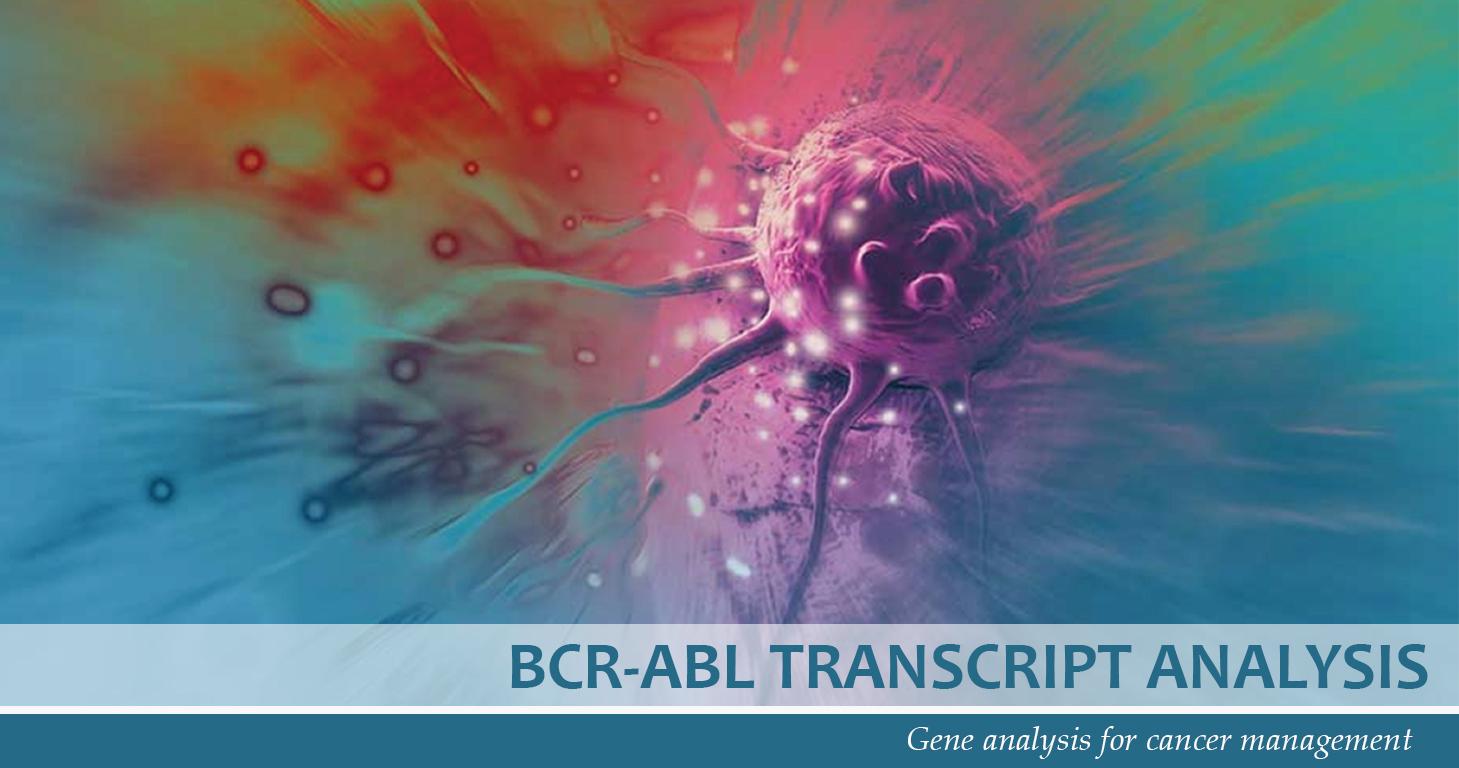BCR ABL Transcript Analysis

BCR-ABL is a mutation that is formed by the combination of two genes, known as BCR and ABL. It's sometimes called a fusion gene.
The BCR-ABL mutation happens when pieces of BCR and ABL genes break off and switch places. The mutation shows up on chromosome 22, where the piece of chromosome 9 has attached itself. The mutated chromosome 22 is called the Philadelphia chromosome because that's the city where researchers first discovered it.
The BCR-ABL gene is not the type of mutation that is inherited from your parents. It is a type of somatic mutation, which means you are not born with it. You get it later in life. The BCR-ABL gene shows up in patients with certain types of leukemia, a cancer of the bone marrow and white blood cells. BCR-ABL is found in almost all patients with a type
of leukemia called chronic myeloid leukemia (CML). Another name for CML is chronic myelogenous leukemia. Both names refer to the same disease.
Chronic myelogenous leukemia (CML), a myeloproliferative neoplasm, is caused by a reciprocal translocation between chromosome 9 (ABL) and chromosome 22 (BCR), resulting in a fusion gene (BCR-ABL), also known as the Philadelphia chromosome. This fusion results in uncontrolled tyrosine kinase signaling, leads to over active downstream signaling and uncontrolled cell proliferation.
For more information, you may download our newsletter below.
